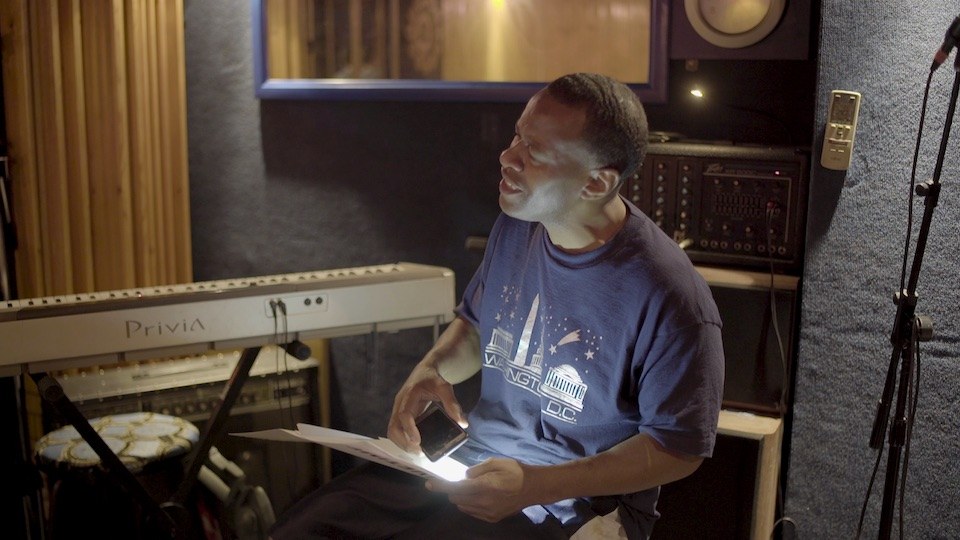In recent years, electronic music collectives around the world have tapped into the radical roots of the various genres they play – Berlin's Room 4 Resistance, London's SIREN, and New York City's DISCWOMAN are just a few of the groups excavating the activist spirit of the past to inform present-day spaces and events.
Add Bring Down The Walls to that list. A collaboration between Creative Time, The Fortune Society, Turner-nominated artist Phil Collins (not the "In The Air Tonight" guy) and over 100 collaborators, Bring Down The Walls is an exciting multi-disciplinary project aimed at smashing the carceral state, seven years in the making.
Every Saturday in the month of May, Bring Down The Walls will convert a decommissioned fire station in lower Manhattan called The Firehouse into a free school and nightclub. During the day, "conversations, workshops, and convenings" will be held by activists, former prisoners, and reform experts working to abolish mass incarceration. At night, the space will host parties with DJ sets from Soul Summit, House Of Vogue, Brujas, Papi Juice, and more.
The concept is an urgent reclamation of electronic music's progressive history, but you don't have to be in New York to experience it. The third and final layer of Bring Down The Walls is an album of classic house music covers, coordinated by Phil Collins and crafted by artists like Empress Of and Nguzunguzu. Crucially, the songs are made with vocals from former incarcerees like Cameron Holmes, who sings on the "2.0" version of Robert Owens's 1986 classic "Bring Down The Walls." Have a listen to that track below, premiering today on The FADER. The full album is available now for pay-what-you-can download, and preorder of limited edition vinyl out on October 5 is up as well.
Over email, Phil Collins told The FADER about his introduction to house music in the '80s, working at coat check in Manchester's legendary club the Haçienda right as house exploded onto the global music scene. But the music's massive popularity belied its radical origins, Collins explained: "The two most dominant structural forces in the ‘80s were the authoritarian need of administrations to criminalize and lock up the body (in the UK it would be more accurate to say to break it) and the counter-force of house, to set it free and to invent new collective ways of being together in space and revolving on this planet."
So, it's a chance to take things back while moving the world forward. Collins spoke to The FADER about the project's origins in a workshop in Sing Sing prison, his hopes for audience diversity, and why New York City was the perfect place to Bring Down The Walls.
Can you talk about the work you did with prisoners in Sing Sing? How did your experiences inform this project?
For a few years I worked with a group of men in Sing Sing on a musical project. We set up a band, and over time worked on developing their original compositions, which we recorded with sound engineers who we were occasionally able to bring in. I’d return for regular blocks throughout the year, and we got the opportunity to spend time together every day, talking and working on individual and group compositions. So we had time and space to get to know each other, play cassettes for each other, talk about pop history, clubbing, prison life, their perspectives on “freedom” and “democracy,” and the tidal wave of killings of young black men by the police. In the breaks between sessions, people would often sing house tracks, and it turned out — which should have been no surprise — that many of us had been to the same clubs in NYC in the ‘90s and most of us have been raised on the same canon of dance floor anthems.
In Sing Sing I was planning to make a film that would follow a day in the life of prison. In the end it didn’t work out, but the connection built around dance music made me think again about its radical, communal, and political potential. And so the idea for the project shifted once again and turned into what became Bring Down The Walls.
 César Martinez, Creative Time’s Leonhardt Cassullo Video Fellow
César Martinez, Creative Time’s Leonhardt Cassullo Video Fellow
“What else is the point of a nightclub but to create a temporary haven, a transient community in which social divisions are checked at the door, and which offers you a glimpse of a different way in which we could come together as society.” – Phil Collins
When did work on the project begin, what was its genesis, and why do it in New York City?
After the experience in Sing Sing I knew that I wanted to use house culture as a lens through which to look at the prison industrial complex. Historically, in the 1980s there was an overlap between the exponential rise of mass incarceration in the U.S. and the emergence of a new dance sound coming out of the communities disproportionately targeted by regressive criminal justice policies like the War on Drugs and the three-strikes laws. And while New York was never a nerve-center of house like Chicago or Detroit, or even New Jersey, it was and still is its spiritual and symbolic home through connection with the clubs and the nightlife scene from the late ‘70s and early ‘80s. I spent quite a bit of time here in the ‘90s, and went to all to the usual haunts — the Tunnel, the Limelight, Area, Twilo, Save the Robots, Escuelita — and it turned out that most guys in Sing Sing with whom I worked used to hang out in pretty much those same spots. The nightlife in New York right now increasingly reminds me of that time — lots of exciting, smart, politically engaged scenes, and so it feels right to be doing the project here at this point.
Cameron Holmes has a voice made for classic house music. How did you guys meet and begin your creative collaboration?
I’d met a very special group of men at Sing Sing, and as the project took different shapes we saw some of them come home and join the project as advisors. They brought us to meet different groups, organizations, and individuals, and our friendships have been really key to this experience. Some people we met inside we found later, through contacts and phone calls, and for the vocalists we followed these same networks of reentry programs, campaigns, personal referrals, and word of mouth. I was never looking for “good” voices but for people who would change me, and others who hear the record, through their connection with the track, their ability to undo us on the dance floor and speak to the affective terrain of these songs. I met Cameron towards the end of this process. And I immediately knew that I would love him to sing the title song.
 César Martinez, Creative Time’s Leonhardt Cassullo Video Fellow
César Martinez, Creative Time’s Leonhardt Cassullo Video Fellow
“To live with prisons is to live in a prison.” —Phil Collins
Tell me a bit more about the nightclub aspect of Firehouse.
The Firehouse is surrounded by the pillars of the prison industrial complex. “The Tombs” — the Manhattan Detention Complex, is on the next block, and the city’s courthouses, bail bondsmen, and legal administrative buildings line the streets.
For me it’s important that this communal space functions in two ways, on equal footing: By day it’ll be a school, primarily led by people who have been directly impacted by the system and those working to radically change it, drawing powerful new connections on the issues and campaigns around decarceration, immigrant rights, ending cash bail, closing jails and prisons, and improving challenges which people coming home face in reentry. At night it turns into a place where you dance your politics into new combinations. Both of these structures of knowledge — the political and the physical, the academic and experiential — we’ve given equal weight and attention to.
The nighttime program is inspired by the early house music venues, which often functioned as hubs of transformative DIY political engagement and offered the promise of a different future, as much as they were spaces of personal liberation and collective transcendence. My hope is that some of the exchanges and ideas from daytime programs will extend into the club, and color the experience of it as a space shared by people who have come together to have a good time but who also share concerns about wider issues which the project addresses.
Both parts of the project — the school and the nightclub — are free and open to the public, and we’ve been working with a number of re-entry organizations and prison abolition campaigns to involve their clients and wider constituencies. My priority is for the audience to be as diverse as possible. After all, what else is the point of a nightclub but to create a temporary haven, a transient community in which social divisions are checked at the door, and which offers you a glimpse of a different way in which we could come together as society.
 César Martinez, Creative Time’s Leonhardt Cassullo Video Fellow
César Martinez, Creative Time’s Leonhardt Cassullo Video Fellow
What are your hopes for legacy of Bring Down The Walls after it closes at the end of May?
I hope that, when they leave, the guests will have taken with them some of the spirit of the project, the excitement and inspiration which I felt when I first started going out. I also hope and expect that Bring Down The Walls the album will continue to live in the world, in other clubs and at other parties, in people’s homes and cars, on turntables, in their everyday lives, and that each time they hear these tracks they’ll be reminded of the people who sing them and the catastrophic impact of a punitive and unjust system which sentences people of color and the poor discriminately and disproportionately, but impacts us all. To live with prisons is to live in a prison.
All proceeds from the album, both as pay-as-you-wish download and when it comes out on vinyl, are going to Critical Resistance, a grassroots organization dedicated to building an international movement to end the prison industrial complex and challenging the belief that caging and controlling people makes us safe. It makes me happy to know that through their future work the project will have a very concrete legacy.
In addition to the school, Legal Action Center will be present on site in designated hours to provide free services for Bring Down The Walls guests. It’s the only non-profit law and policy organization in the U.S. whose mission is to fight discrimination against people with criminal records, histories of addiction, or HIV/AIDS, and to advocate for sound public policies in these areas.
Is there anything else you'd like people to know about Bring Down The Walls?
Yes. Of course. Not something to know, but something to do: Bring. Down. The. Walls.
